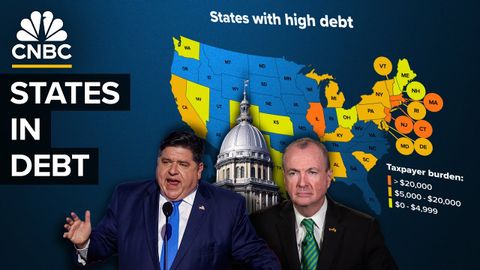美國 27 個州為何走向破產 (Why 27 U.S. States Are Going Broke)
VoiceTube 發佈於 2024 年 11 月 06 日  沒有此條件下的單字
沒有此條件下的單字US /pəˈtɛnʃəl/
・
UK /pəˈtenʃl/
- adj.可能的;潛在的;潛在的
- n. (u.)潛力,潛能
- n. (c./u.)潛力;潛能;潛在候選人;勢
US /pænˈdɛmɪk/
・
UK /pæn'demɪk/
- adj.(疾病)大規模流行的,廣泛蔓延的
- n.大流行病
US /trɪˈmɛndəs/
・
UK /trəˈmendəs/
- n. (c./u.)條件;條款;期間;期限;學期;術語;關係;項;妊娠期;任期
- v.t.命名
